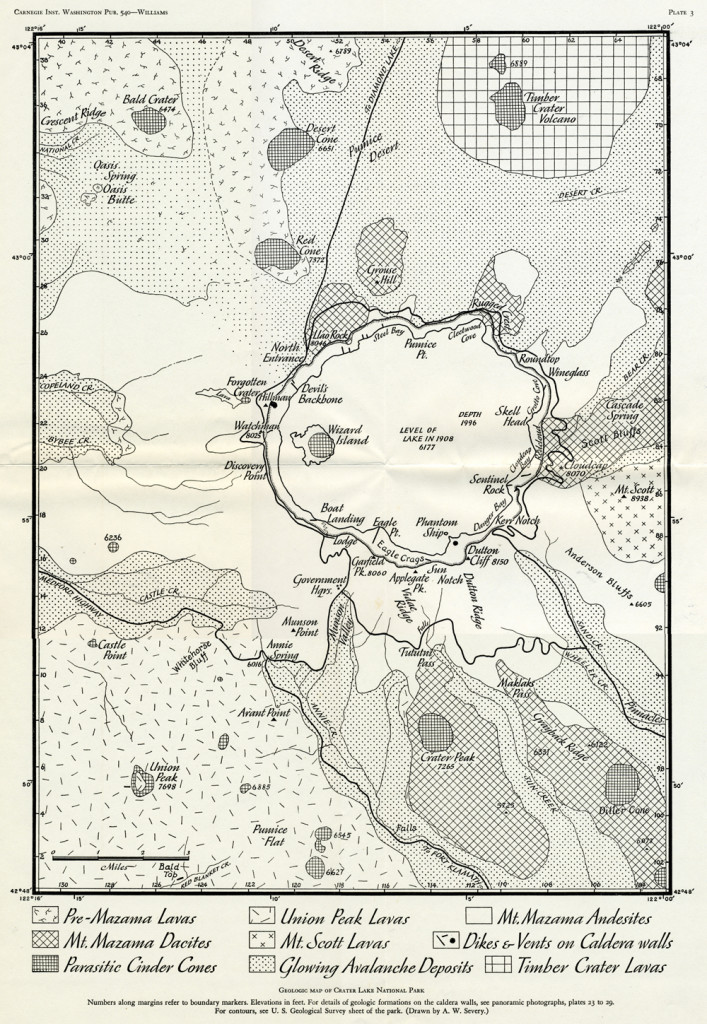Not all this dacite issued from fissures at Tututni and Maklaks passes; much was erupted from vents scattered along the length of the flows. Flow for flow, the dacites are much thicker than the andesites which make up the primary cone of Mount Mazama. In the cliffs south of Maklaks Pass there is an unbroken sheet of glassy dacite 500 feet thick, apparently the product of a single eruption. On the opposite side of Sun Creek canyon, near Tututni Pass, one of the flows is at least 200 feet thick.
Other features serve to distinguish the dacites from the older andesites of Mount Mazama. Many of them were formerly so much more glassy that they may properly be spoken of as devitrified obsidians. Coupled with this former glassiness are a delicate, hair-fine banding never seen among the andesites, and an abundance of glistening plates of tridymite lining lithophysae and joint planes. Some of the flows are heavily charged with pink and gray spherulites up to an inch in diameter; in others, dense blue-gray bands alternate with highly pumiceous cream and white bands. Phenocrysts of quartz seem to be absent, but large crystals of feldspar and granules of pyroxene are ubiquitous. Noteworthy also is the fact that by comparison with the andesites they are much poorer in basic, lamprophyric inclusions. Finally, the banding in the flows commonly steepens upward from the base and inward from the margins, so that near the top it may be vertical.
Several oval hills rise above the general level of both Vidae and Grayback ridges. Examples are those numbered 5725, 6122, and 6077 on the geologic map (plate 3). Some are entirely buried by pumice and glacial drift, and even on the others exposures are rare. Probably the tops of the highest hills were never covered by ice. These hills are not simply erosional remnants of lava flows; they seem rather to represent domical protrusions of Pelean type, and they may be the final products of vents from which some of the dacite flows were erupted. Each hill consists of pale-gray or white pumiceous dacite, either obscurely banded or quite devoid of fluxion, so that the internal structure cannot be determined. On some, the surface is littered with round boulders of tridymiterich, crumbly dacite, reminiscent of the blocky crusts of Pelean domes seen in other volcanic regions.
Plate 3.
***previous*** — ***next***


